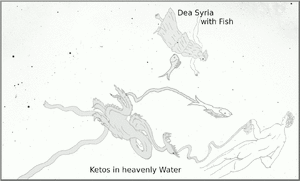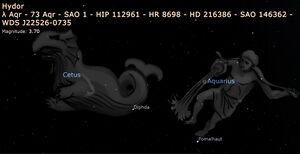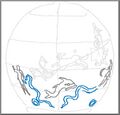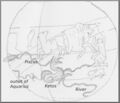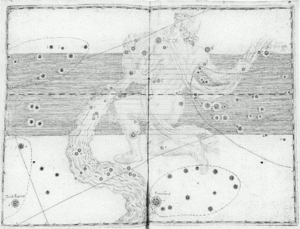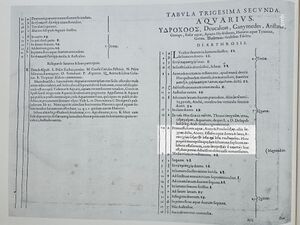Hydor
Hydor
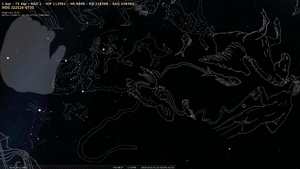
The Ancient Greek term Hydor (ὕδωρ) means "Water". It is a constellation that is only mentioned in Aratus' didactical poem "Phainomena".
Etymology and History
Ancient Constellation
Aratus (4th century BCE) in his didactic poem "Phainomena" mentions a constellation "The Water" that is mentioned by no other preserved text:
Other stars lying scattered below the Water-pourer hang in the sk between the celestial Monster and the Fish, but they are faint and nameless. Close to them, like a light spray of water being sprinkled this way and that from the right hand of the illustrious Water-pourer, some pale and feeble star go round. Among them go two rather brighter stars, not so very far apart nor yet very close, onebeautiful and bright star beneath the two feet of the Water-pourer, the other below the dark Monster's tail. Men call them collectively the Water. (389-399)
These stars are in the area of the sky between the bright stars Diphda and Fomalhaut, south of the Aquarius and Cetus.
The three preserved ancient globes depict this constellation of The Water as a vessel for the monster named "Ketos" in Greek, making it a monster living in the water (sea), a seamonster.
Image Gallery
Star Name (Early Modern)
"Hydor" - water - is the first name listed in Allen (1899) although not transliterated from the Greek to Latin alphabet: "λ, 3.8, red, is the most prominent of the first stars in the Stream. Proclus followed Aratos in calling it Ὕδωρ, [note: Hydor] the Water; and others, Ἔκχυσις, [note: "Ekkhysis"] the Outpouring; Aratos describing it, "Like a slight flow of water here and there, Scattered around, bright stars revolve but small"; although these titles, appropriated by Bayer for λ, originally were for the whole group set apart as the Stream. Allen's description basically repeats Bayer (1603) Uranometria, attributing names to Aratus and Proclus.
However, the entry is one of many sloppinesses in Allen (1899). The term "Hydor" describes the whole huge region of faint stars around Cetus - it is the element that makes the monster depicted in Cetus a seamonster (because it is in Hydor!). This way, the constellation Hydor is depicted on all three surviving globes from antiquity!
Mythology
IAU Working Group Star Names
As the term Ὕδωρ originally describes a constellation and, thus, a group of many faint stars or an area in the sky, we can apply the name to any star in that area around the figure of Cetus (in Eridanus, Fornax, Cetus, Sculptor, Aquarius - although "For" doesn't make sense). The name "Hydor (ὕδωρ) is suggested
- for 2 Cet (HIP 301, HR 9098 SIMBAD), a blue star (B9) of 4.536 mag in visible light. In modern star charts, the star is located between the tail of the Cetus-figure and the drops of the outlet of Aquarius.
- or for lambda Aqr as preserved in Bayer's Uranometria (1603) which is a red star (M2) of Vmag 3.79 (SIMBAD). However as a bright star in the zodiac, lambda Aqr has multiple cultural aliases that may be more appropriate choices (e.g. Tibetan "Mondru" (Johnson-Groh 2013), Hindu "Satabhisa"/"Satabhisaj"/"Satabhisak" (Venketeswara & Shylaja 2016, Sarma 1997, Rudra 2006)).
the WGSN chose ... (not to apply/ to apply the name to a neighbouring star/ to ...) in the IAU-CSN.
Weblinks
- Ridpath, Ian, “Star Tales: online edition”.
